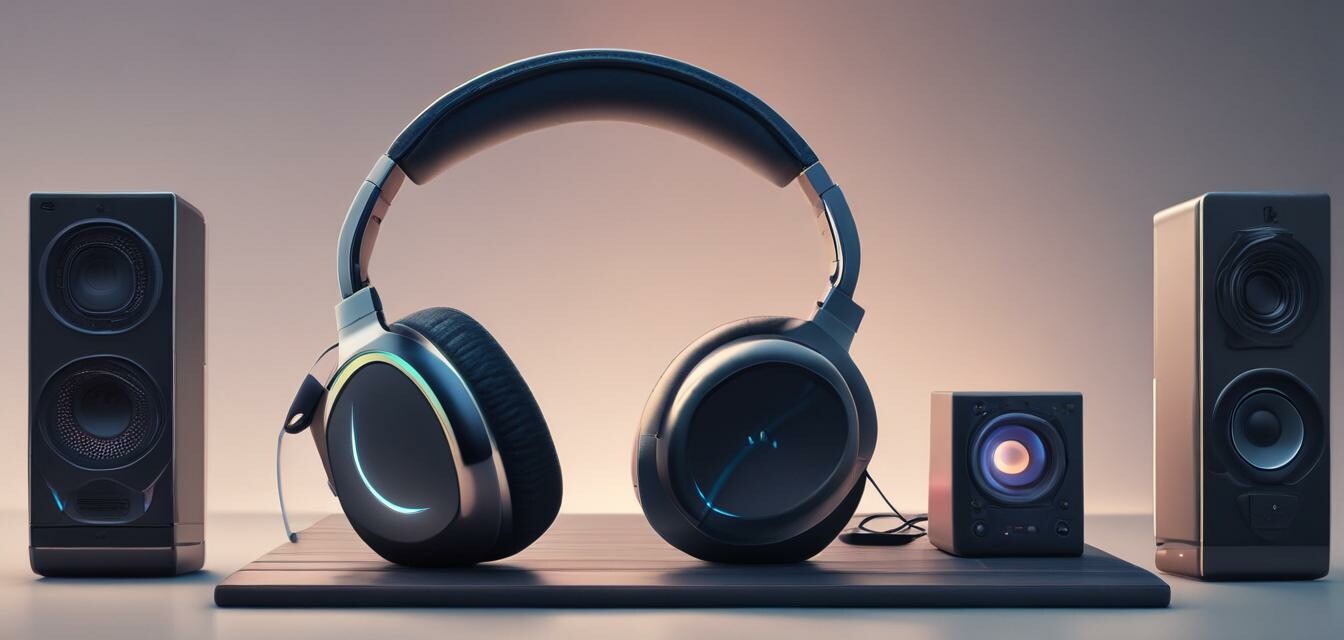
The Latest Trends in Audio Technology for 2025
Key Takeaways
- Wireless technology continues to improve, providing better sound quality and convenience.
- Smart audio devices are becoming more intuitive, integrating AI to enhance user experiences.
- Spatial audio is gaining popularity, creating a more immersive listening experience.
- Audio personalization allows users to tailor soundscapes to their unique preferences.
- Eco-friendly audio gadgets are on the rise, reflecting an increased awareness of sustainability.
As technology evolves, so does our relationship with sound and music. In 2025, the audio industry is set to experience transformative changes that will redefine how consumers interact with their favorite soundtracks, podcasts, and audio content. From innovative gadget features to enhanced listening experiences, let's dive into the cutting-edge trends that are shaping the future of audio technology.
1. The Rise of Wireless Audio Solutions
Wireless audio gadgets have swiftly become the norm, and advancements in Bluetooth and Wi-Fi technologies are propelling this trend forward. The benefits of wireless audio include:
- Greater mobility without tangled wires.
- Improved sound quality with next-gen codecs.
- Easy connectivity across multiple devices.
Two Key Wireless Technologies
| Technology | Overview | Benefits |
|---|---|---|
| Bluetooth 5.2 | Offers enhanced audio streaming capabilities. | Lower latency and better range for seamless listening. |
| Wi-Fi Audio | Allows high-fidelity audio streaming over network connections. | A better option for lossless audio formats. |
2. Smart Audio Devices and AI Integration
Smart home devices are evolving, featuring integrated voice assistants and AI technologies that learn user preferences. This trend paves the way for:
- Hands-free controls of audio systems.
- Personalized playlists curated based on musical tastes.
- Seamless integration with other smart home devices for holistic living.
Impact on User Experience
As AI continues to improve, audio devices will not only play sounds but will also understand the context of audio requests, making audio playback more intuitive than ever.
3. The Popularity of Spatial Audio
Spatial audio technology is set to redefine how we experience sound in 2025. This technology creates a multidimensional soundstage that makes listeners feel like they are in the middle of an audio scene. Benefits of spatial audio include:
- Enhanced immersion in music, films, and virtual reality experiences.
- A more authentic representation of live audio performances.
- Broader sound clarity and detail, especially in multi-track recordings.
4. Personalization in Audio Experiences
With the rise of audio personalization technologies, users can tailor their listening experiences to suit their unique preferences. This trend involves:
- Customizable sound profiles based on individual hearing capabilities.
- Adaptive sound settings that adjust based on the environment.
- User-friendly interfaces for easy management of audio preferences.
The Future of Personalized Audio
The shift towards personalized audio experiences marks a significant advancement, providing better engagement and satisfaction for users.
5. Eco-Friendly Audio Gadgets
In a world increasingly aware of environmental issues, eco-friendly audio gadgets are gaining traction. Key features of these products include:
- Use of sustainable materials in device production.
- Energy-efficient designs for lower power consumption.
- Programs for recycling old audio devices.
Consumer Demand for Sustainability
Consumers are increasingly demanding products that not only perform well but are also responsible. This trend is driving manufacturers to innovate sustainably.
Conclusion
The audio technology landscape in 2025 is truly dynamic, characterized by wireless conveniences, smart integrations, immersive audio experiences, personalization, and a strong focus on sustainability. Keeping an eye on these trends is essential for consumers looking to upgrade their audio experience or stay ahead in the ever-evolving tech world.
Pros
- Cutting-edge sound technologies enhance audio experiences.
- Smart devices offer convenience and tailored experiences.
- Focus on sustainability aligns with consumer values.
- Wireless technologies provide unmatched mobility.
Cons
- Prices of advanced audio gadgets can be higher.
- Some technologies may require updates to existing systems.
For more insights into the world of audio gadgets, check out our other categories such as Audio Gadgets and Buying Guides. Stay informed about the latest news and trends in the electronics market and explore the best in Smart Home Devices.
